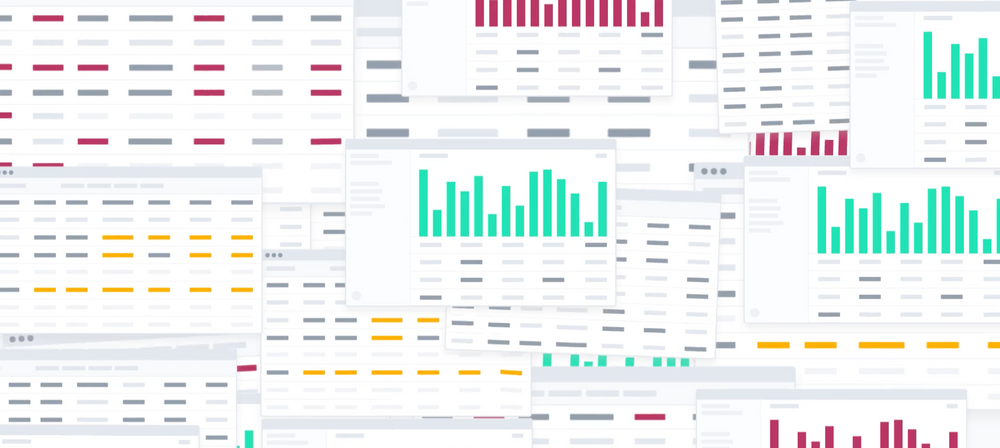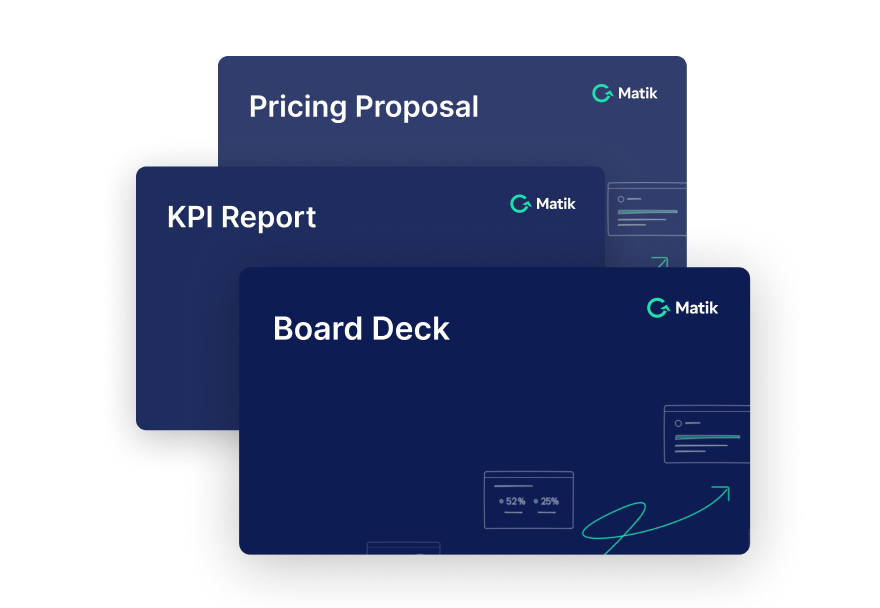Join Our Newsletter
The definition of data-driven content may be something a little different based on the industry or field you work in. But here at Matik, data-driven content refers to highly specific, customized resources that customer success, sales, marketing, and data teams can use to build credibility and strengthen relationships with their accounts.
Data-driven content can be internal or external-facing and can take many different forms, including Google Slides or Powerpoint presentations, PDF files, infographics, one-pagers, or even emails. Ultimately, data-driven content refers to resources your team can use to better understand its accounts, or to help accounts better understand the value of the services you offer.
Benefits of data-driven content
When used as part of a larger customer success, sales, data, operations, or marketing strategy, data-driven content can have countless benefits, including:
- Better cross-functional collaboration: When used internally, data-driven content gives cross-functional teams greater visibility into data about specific accounts and overall performance.
- Proving product value: Customer success and sales teams can share data-driven content with prospects and customers to develop a narrative that proves the value of their product.
- Proving ROI: Data-driven content that is enriched with tables, charts, and graphs can help customers and prospects visualize and understand the ROI of a specific offering.
- Competitive edge: Teams that present key insights in a compelling way through data-driven content are more likely to establish themselves as trusted advisors and set themselves apart from the competition.
- Improved customer satisfaction: Customers with greater visibility into the success of a particular offering will be happier with their investments, increasing likelihood of retention, expansion, and brand loyalty.
These benefits just scratch the surface—sharing data with customers can be a powerful way to build trust, deepen relationships, and impact revenue.
Types of data-driven content
Data-driven content uses data to identify trends, preferences, behaviors, recommendations, and success of a specific account or group. This data is presented in a way that is relevant, informative, and engaging. Data-driven content can take many forms, including:
- Business review presentations
- Onboarding content
- Training presentations or sessions
- ROI or QBR one-pagers
- Business case decks
- Internal account reviews
- Case studies and customer success stories
- Marketing content
- And more
Data-driven content can be utilized strategically throughout the customer journey to reinforce product value and provide guidance. As mentioned above, sharing data with customers is a powerful way to build trust, deepen relationships, and improve customer satisfaction. However, it is important to do so in a way that is clear, concise, and digestible. Here are some tips for sharing data with customers:
- Be transparent: Even if data isn’t favorable or complete, it can still be a valuable opportunity. By being transparent, you can build trust with your customer and provide recommendations for improvement over time.
- Use plain language: Avoid using technical jargon or complex language that might confuse or overwhelm the customer. Instead, use clear, simple language that is easy to understand. You may also want to use visual aids, such as charts or graphs, to help illustrate your points.
- Provide context: When sharing data with customers, provide context to help them understand what the data means and how it relates to their experience. This can help customers see the value in the data and understand why it is important.
- Offer insights: Rather than just sharing raw data, offer insights or analysis that help customers make sense of the data. For example, you could explain trends or patterns that you have observed, or provide recommendations for how the customer can use the data to improve their experience.
- Be responsive: If a customer has questions or concerns about the data you are sharing, be responsive and address their concerns promptly. This can help build trust and demonstrate that you value the customer's feedback and input.
- Meet them where they are: Understand each customer’s stage in the customer journey and which data will serve them best at each stage. Align on goals early and often, and share data at the frequency that works for them.
By utilizing data-driven content at your own organization, you can strengthen credibility and make more informed decisions that benefit your team and your customers. To see examples of data-driven content, check out these data-driven content templates.
---
See Matik in Action—Request a Demo
















